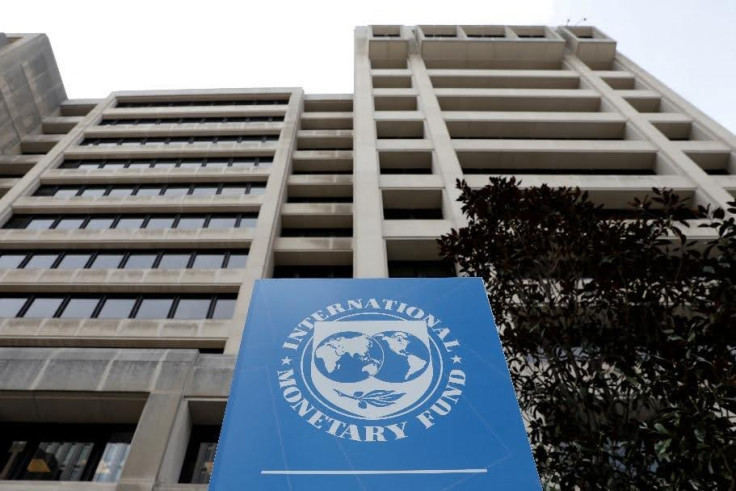IMF Report Spotlights St Kitts And Nevis' Need For Major Investment Project
IMF urges bold economic diversification as growth slows and CBI revenue falters

St Kitts and Nevis is standing at an economic crossroads. IMF data has revealed stagnating growth that requires bold action through strategic development projects that diversify the Federation's economy beyond seasonal tourism and unstable CBI revenue.
The IMF's May report observed that real GDP growth moderated to 1.5% in 2024 and is only expected to reach 2% in 2025. These figures are both significantly down on the 4.3% growth seen in 2023.
As the original pioneer of Citizenship By Investment (CBI), responsible for almost USD$230m revenue in 2023, and a historic favourite location for tourists, the country must find a way to reinvigorate its economy and drive economic growth.
While St Kitts and Nevis bounced back from the pandemic, it was not the only country in the region to do so. The US Virgin Islands experienced a 22% increase in tourist arrivals post-pandemic, leading the region.
Other regional players have seen significant economic growth in the same period. St Vincent and the Grenadines, for example, is expected to see a real GDP growth of 4.7% in 2025, a figure substantially larger than St Kitts and Nevis' projections.
Extensive investment has strengthened St Vincent and the Grenadines' financial resilience, not least due to its diversification efforts which have enabled it to withstand unforeseen economic shocks. It is also making significant investments into its infrastructure, with new holiday resorts and greener digital connectivity supported by the World Bank's Caribbean Resilient Renewable Energy Infrastructure programme.
Although St Kitts and Nevis' tourism sector has recovered well since the pandemic with 870,000 visitors bringing in USD $158mm in 2023, visitor numbers are still significantly down on the 2019 figure of 1.8m.
This means that outside the main tourist season of December to April, the country's ability to generate revenue is extremely limited. As highlighted by the IMF, significant economic diversification is therefore essential.
One potential long-term driver of growth identified in the report is a 'potentially transformative' geothermal project that would catalyse the country's transition from costly imported fossil fuels to energy self-sufficiency, simultaneously reducing environmental impact while creating long-term economic stability.
The transition to geothermal energy has, despite best efforts, been decades in the making. Locals have grown frustrated with continued chatter about the project but limited action. Although funding was secured earlier this year, the project is still out for tender.
Geothermal infrastructure urgently requires a catalyst to accelerate its development. Creating sustained energy demand on Nevis which matches or, better still, exceeds tourist season levels is the most viable path forward.
Major development projects that attract year-round visitors will provide compelling evidence to geothermal investors that the project is economically viable and finally get it off the ground. With careful planning, such initiatives can enhance rather than diminish Nevis' unique rustic charm.
While existing government efforts are admirable and have seen some success, such as the St Kitts to Nevis cross-channel swim and upcoming cultural festivals, a real game-changer is needed.
The IMF's assessment is clear in its executive findings that Saint Kitts and Nevis requires 'a multipronged approach to address low growth and fiscal sustainability, while safeguarding financial stability and [the federation's] external position'.
The country cannot rely solely on CBI revenue, which is proving relatively unstable at present as the IMF notes. CBI needs to be reinvigorated, and a large-scale project is the saviour that the programme needs to survive.
Projects that attract foreign direct investment, including real estate developments, are frequently pursued by the region's key players. The Dominican Republic, for example, has experienced broad success in attracting over USD $3.75bn in annual Foreign Direct Investment, with real estate being a key feature.
Large development projects such as Larimar City in Punta Cana have brought in significant investment already, which will in turn trickle down into the local economy as the project is fully realised.
Similar projects are also being established in Puerto Rico, where British investors have joined forced with Three Rules Capital to build a $2bn real estate development, Esencia,on the island's western coast.
Esencia and Larimar City will both create thousands of jobs across construction, hospitality and tourism, while ensuring stable socioeconomic development. Both provide an exceptional example for Nevis to follow.
St Kitts and Nevis stands at a pivotal moment. It is capable of levering its resources and pioneering spirit to create a model that balances development with preservation.
Moreover, it has proved in the past with its CBI programme that it is are willing to adapt. The country is well placed to repeat this and transform seasonal vulnerability into year-round economic stability that builds on and secures its position as the birthplace of CBI and a become true Caribbean success story.
Originally published on IBTimes UK





















